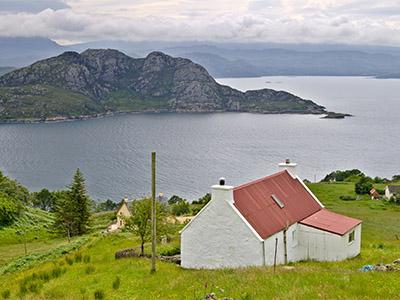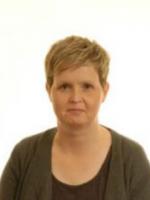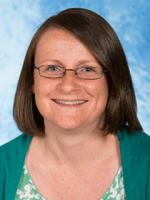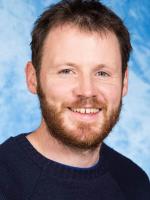Introduction
The demographic future of Sparsely Populated Areas (SPA) has become a topical issue in recent years. It connects with a number of current debates, including rewilding and resettlement options; the Islands (Scotland) Act and National Islands Plan; the concept of inclusive growth; the implications of post-Brexit migration policy; and the challenges faced by remote areas within the Covid-19 pandemic. Although the Highland Clearances narrative is etched into the national consciousness and popular culture, the gravity of the current situation, the future prospects, and implications for SPA communities are often underestimated. This project considers the demographic trends in the SPA, discusses the likely implications for the communities which live there, and explores potential policy responses which have “intervention logics” carefully adapted to the realities of the demographic situation, place-based assets and foreseeable trends in technological, social, economic, and policy contexts.
The research involves a number of activities. A foundational task was to develop a specific and operational definition of SPA in Scotland. This made it possible to review recent demographic changes, assess economic and agricultural trends, and develop population projections and foresight. Another stream of work explores the implications of sparsity and demographic shrinking for service delivery, and the recursive effect of changes in service provision and accessibility upon migration from and to the SPA. We also seek to learn from international experience, and good practice in similar contexts in Europe and further afield. The final phase of the project will focus on the development of novel economic-demographic foresight for SPA, demographic change in the Scottish islands and island and rural responses to Covid-19.

Aim of Research
This research deliverable addresses the following question: What are the links between trends in farming/crofting/key rural industries and population change, in sparsely populated rural areas, and how do these affect the resilience of rural communities? The project will consider recent trends (since 1991) and will formulate scenarios for the period up to 2050.
Progress
2021 / 2022
In the final year of the Strategic Research Programme, work continued on understanding the impacts of Covid-19, bringing together researchers from across the Communities and Wellbeing work package. Findings from the initial research undertaken in 2020/21 were presented to stakeholders at a workshop on 21 June 2021, and follow-up interviews with a subset of stakeholders took place in February 2022 to understand the ongoing effects of the pandemic in rural and island Scotland, with findings published in a summary report. Additionally, researchers improved the economic-demographic modelling which had been explored previously and projected future potential populations across sparsely populated areas under a scenario of regional economic development. These projections (assuming no migration or labour supply barriers) and their comparison with previously published projections enhances understanding of the potential for repopulation across rural Scotland.
In addition, a rapid evidence review was conducted comparing the impacts of Covid-19 in sparsely populated areas of Scotland with impacts in other remote rural regions worldwide. Researchers also produced recommendations for future replacement LEADER initiatives, such as Community Led Local Development (CLLD) grants, based on a review of evaluations of the LEADER Programme by Local Action Groups. In October 2021, two PhD students began research on issues relating to island migration, jointly supervised by members of the project team and staff in the Department of Geography, University of Aberdeen.
Highlights
Currie, M., Wilson, R., Noble, C. and Gurd, J. (2022) The ongoing impacts of Covid-19 in Scotland’s rural and island communities Summary report, March 2022. This report presents findings on the impacts of the pandemic in rural and island areas of Scotland. It is based on follow-up interviews with rural and island stakeholders in February 2022, 18 months after the first round of interviews to understand the initial impacts.
Hennebry, B., McMorran, R. and Craigie, M. (2022) Impact of the Covid-19 pandemic in remote rural and Sparsely Populated Areas and lessons for Scotland. Final report submitted to Scottish Government, March 2022.
Hopkins, J., Piras, S. and Kapour, G. (2022) 'Untapped potential'? Linking regional economic futures and the prospects for demographic recovery in sparsely populated Scotland. Report submitted to Scottish Government, March 2022. This work updates previous exploratory modelling of future populations in sparsely populated Scotland, presenting the results of data-rich modelling of regional and sub-regional populations under ‘business as usual’ economic development and progression to net zero.
2020 / 2021
The Covid-19 pandemic has had a major impact on research across the Communities and Wellbeing work package, and researchers involved in this deliverable joined a collective WP3.4 responsive project assessing impacts of coronavirus on rural communities, and the resilience of responses. A summary report, “Understanding the response to Covid-19: exploring options for a resilient social and economic recovery in Scotland’s rural and island communities”, was published in March 2021. Demographic ageing was identified as a crucial factor affecting the vulnerability of communities to Covid-19, and encouraging younger people to move to rural communities to support sustainable repopulation forms a key recommendation to support a resilient rural recovery. A Scotland-wide index of resilience to Covid-19 impacts was also calculated for rural areas and towns, capturing themes related to enabling factors of resilience to the pandemic’s impacts, including population change, demographic structure, and care facilities for older people and children. This analysis identified striking differences across Scotland and within regions, and was used to identify case studies within the project.
Ongoing longer-term research on demographic change continued: a report was produced on service accessibility for young people in Argyll and Bute, describing geographical differences in access to key services associated with population growth. A report providing an assessment of Scottish and international examples of successful policy interventions to support repopulation of island and remote rural communities was published in the summer of 2020. Updated demographic projections for sparsely populated areas were released, projecting an 18.6% population decline from 2018-43 with variability in projected trends within the SPA. Economic-demographic foresight: a novel modelling approach to enhance the understanding of migration patterns within population projections, has also been developed. Researchers have also been involved in the delivery and analysis of a major survey (sample size: 20,000 residents) of the Scottish Islands, associated with the National Islands Plan.
Highlights
Research Report: Understanding the response to Covid-19: exploring options for a resilient social and economic recovery in Scotland’s rural and island communities. This report presents an in-depth analysis of the impacts of the pandemic on rural communities across Scotland, based on detailed interviews with rural stakeholders, small area-resolution analysis of resilience, and regionally targeted case study approach. Media coverage: Daily Record; Scottish Farmer. Following the publication of the report, a stakeholder workshop ‘Responding to the Impacts of Covid Study’ was held (21st June 2021) to consider the report’s recommendations and ways to implement them.
Research Report: Case studies of island repopulation initiatives. This report was published in summer 2020, providing an assessment of Scottish and international examples of successful policy interventions to support repopulation of island and remote rural communities. Media coverage: Scottish Farmer; BBC Orkney
Research Brief: Population projections and an introduction to economic-demographic foresight for Scotland’s sparsely populated areas (2018-43). This report (published September 2020) presents revised projections for different parts of Scotland’s sparsely populated areas and introduces a novel method for incorporating estimates of labour migration within population projections.
Research Report: National Islands Plan Survey: Final Report. This report and results explorer describe the results of a large survey of island residents, which collected data on the lives and experiences of residents on Scotland’s islands. Notably, the analysis revealed sharp differences in perceptions across different island regions and between different age groups, and challenged assumptions made about island life. This research was funded separately by the Scottish Government but collected key primary data from sparsely populated areas, aligned with the National Islands Plan’s objectives.
2019 / 2020
Year 4 of this research has focused on how the population of the SPA might change in the future: focusing on the relationship between service accessibility and the "liveability" of a place, and developing a method to assess how future economic change could affect population change in the SPA. The latter involved the production of an updated SPA definition and revised population projections for the 2018-43 period: this work forms the basis for an economic-demographic foresight method to evaluate future migration patterns in a future economic scenario, which considers local-level employment characteristics and economic linkages across Scotland. Separate qualitative research has assessed mechanisms at national and regional scales for informing measures to support repopulation in the Scottish SPA, including regional repopulation initiatives within island areas in Scotland, Europe and North America. This case study-based research led to the identification of key themes and lessons for Scotland. Furthermore, a regional spatial analysis of services of general interest relevant to young adults has been completed for Argyll and Bute, providing detailed information on access to services essential for supporting population retention and growth within sparsely populated areas.
This project has been informed by two SEFARI Responsive Opportunity Fund projects: Islands Revival, which explored green shoots of population growth in Scotland's islands; and Towards Inclusive Growth, a collaborative project with Highlands and Islands Enterprise to develop a spatial understanding of inclusive growth in this region. Islands Revival concluded with a workshop on Skye in August 2019 with diverse island stakeholders, and the publication of the Islands Revival Declaration. An ongoing social media presence has been established through the Research on the Edge blog and Twitter account, also supported by SEFARI, which showcase our own and others’ research into remote and island communities. Project researchers have also contributed to, and produced material for, the Cross Party Group for Rural Policy (October 2019) and Scottish Rural Network Rural Population Workshop (March 2020).
Highlights:
Research brief: Population projections and an introduction to economic-demographic foresight for Scotland’s sparsely populated areas (2018-43). This presents revised and updated population projections for sparsely populated areas in Scotland, and describes an economic-demographic foresight method for enhancing projections.
Research report: Case studies of island repopulation initiatives. This report builds on the previous report on International case Studies of Demographic Change and presents a series of specific Scottish and international examples of successful policy interventions to support repopulation of island and remote rural communities, which could be piloted in similar communities in Scotland. The report considers examples from Ireland, Denmark, Scotland, the Faroe Islands, USA and Canada. The research involved a desk-based review of available documentation and interviews with key contacts with knowledge of each initiative or group of initiatives. Five topics are considered for each case study: the extent of the depopulation/repopulation challenge; key initiative(s) put in place to tackle the challenge; key successes; key challenges; and future plans and lessons for Scotland. The case studies include a range of initiatives focussed on: attracting new residents to island communities and supporting their integration; improving the facilities/opportunities available to island communities to instil a sense of pride and greater attachment to place to encourage residents to return and/or not leave; diversifying the economic base to attract new, often mobile businesses; improving skills and employability; and providing adequate housing for new and/or returning residents.
Six key cross cutting themes which emerged from this work included: i) the importance of a sound long term financial resource base for initiatives; ii) the development of holistic initiatives with a suite of measures; iii) ensuring long term community buy in and support; iv) building in measures to support integration of new/returning residents into the community to ensure long term retention of in-migrants; v) development of a more diverse economic base in remote rural/island regions; and vi) being aware of the potential for unintended consequences (e.g. pressure on services or a long reliance on volunteers).
2018 / 2019
During year 3 the main focus of the research was upon understanding recent trends in the economy of the SPA, and how these are likely to affect (or be affected by) future trends in population. To this end available secondary data was reviewed and key trends identified, covering farming and crofting land use, and employment (across all sectors).
Looking ahead, an initial review of scenario methods led to a focus upon a backcasting approach as the most appropriate way to explore future options for the SPA. A methodology has been developed which will, in consultation with key stakeholders, build a picture of how the economy of the SPA would need to change in order to attract sufficient migration to stabilise the population.
Within the service provision strand of research, analysis of SPA/Non-SPA changes in provision of the four exemplar services (primary schools, childcare, elderly care and GP surgeries) was carried out. Another element of the work explored ways to assess spatial variations in service provision as a motivation or inhibitor for migration.
Data was collected on European case study areas (in Sweden and Norway) and several case study areas in Canada where population decline has been a challenge and different responses have been implemented to stabilise or indeed reverse this trend, with emphasis placed on distilling key learning for Scotland. A report on the findings has been produced.
Highlights:
- Research note: Demographic change in the Sparsely Populated Areas of Scotland (1991-2046): This research note summarised key findings from three working papers. Attendant media coverage included BBC Radio Scotland’s news programmes, BBC Scotland’s ‘Out of Doors’ programme, and an interview and commentary in two daily newspapers.
- Further publicity for key report: A link to the WP3.4 report ‘Demographic change in the Sparsely Populated Areas of Scotland (1991-2046)’ featured in a Huffington Post article.
2017 / 2018
Two reports were produced on demographic profiles and demographic projections in Scottish SPAs. A more concise “research note” was also produced summarising these findings. This research highlighted dramatic population change in SPAs, resulting from reduced numbers of children and people of working age. To maintain current population numbers net migration will need to increase substantially in the next 3 decades.
A database of June Agricultural Census data, distinguishing the SPA and the rest of rural Scotland, and covering the period from the mid-1990s to 2016 was created. It has been found that the agricultural workforce of the SPA has declined since the 1990s but more slowly than in the rest of rural Scotland (presumably due to scarcity of alternative employment opportunities).
A number of sources of small area employment data were analysed, in order to establish trends in economic activity across the whole spread of sectors. The primary sector is still relatively important in the SPA, but tourism and leisure related activities probably account for more employment. Employment in the public sector seems to have drained away from the SPA, concentrating in more accessible locations. Recent trends in land use and livestock numbers in the SPA were also reviewed. The overall narrative is one of extensification – reductions in livestock numbers and in the area of improved grass.
Recent changes in ecosystems and natural assets were summarised in a presentation which assessed the supply and flow of ecosystem services and biodiversity from semi-natural habitats in upland areas under different management schemes. In this presentation, the intended and unintended consequences of grazing versus rewilding in highland glens were assessed.
Work on service provision and accessibility (a) established a simple classification of services according to delivery mode, (b) selected a set of “exemplar services” which will be used to illustrate the way in which sparsity affects decisions about provision, and (c) reported the findings of an initial set of stakeholder/service user interviews.
Highlights:
- Working paper describing the definition of the Scottish SPA using a model incorporating road/ferry network, instead of straight line distances. Maps have been produced showing potential population thresholds.
- Working paper reviewing intervention logics relating to policy to support sparsely populated areas in Scotland and selected European countries.
- Working paper of a state-the-art review of place-based and ‘spatially blind’ policies, with particular reference to rural Scotland.
A presentation at the Agricultural Economist’s Society, Dublin Apr-17 on “Scotland’s Sparsely Populated areas: Demographic trends and policy approaches and the relevance of European Policy approaches to the Scottish context”
2016 / 2017
During the first year of the project the main focus was upon achieving an objective definition of the Sparsely Populated Area (SPA) of Scotland, in the light of previous research and practice in similar regions across Europe. The definition of the Scottish SPA was fully described in a working paper. Geographic information system analysis identified all Census output areas from which fewer than 10,000 residents may be accessed within 30 minutes travel time. This definition has been adapted to various different "geographies" (Scottish data zone, agricultural parish, Sub Council Areas for Projections [SCAP]) by the provision of "lookup tables". The SPA has further been sub-divided into six sub-regions, to allow assessment of internal variation.
Preliminary analysis of population and employment trends was carried out. This showed that: (a) Sparsity is not always associated with population decline. The pattern of change in the SPA has over the past two decades been rather variable, with certain areas being consistently in decline others showing modest growth. Official projections for the next decade seem to be more pessimistic - with the majority of the SPA moving back into decline.
Preliminary work was also carried out with respect to service provision in the SPA, and preparations were made for the more detailed review of demographic trends and changes in economic activity within the SPA. These were further developed in Year 2.
A review of policies and intervention logics, both within Scotland and across a range of comparable European regions was reported in a Working Paper. The paper includes a review of demographic trends in the Scottish SPA, a simple typology of policy rationales and approaches, a review of 50 years of policy in the SPA, comparative information from five other European countries, some key narratives of future change and tentative policy implications for the SPA.
Highlights:
- Publication of the first working paper – Conceptual Framework and Definition of SPA
Future Activities
The new Strategic Research Programme 2022-27 will build on the work undertaken by the research team under the 'Rural Futures' theme, in particular through the 'Rural Economy' and 'Rural Communities' projects and additional work on rural development data within Underpinning National Capacity. The former two projects will work together on a suite of 'Living Labs' in rural and island Scotland over the course of five years to understand and enable processes of positive change. They will address aspects such as housing, transport, digital connectivity and food distribution, framed within cross-cutting themes of climate change, economic recovery, social innovation, resilience and population change. Our understanding of regional and rural diversity and development challenges and opportunities will be enhanced through spatial analysis, and the research will also apply experimental economic methods and agent based modelling.
Selected Outputs
Conference Presentations:
Copus, A. Life beyond the point of no return? Demographically driven territorial fragility in remote rural Scotland. A RESEARCH AGENDA ON TERRITORIAL FRAGILITIES. Launch of DAStU Research Centre. Politechnico di Milano, March 26th 2019
Copus, A., Grunfelder J, and Tagai G. (2019) European Shrinking Rural Areas: Challenges, Actions and Perspectives for Territorial Governance. ENRD Workshop: Combatting Rural Depopulation: Creating new opportunities for vibrant rural areas Brussels - 21 May 2019
Dax, T., and Copus, A. (2019) Green shoots or chimera? Emerging evidence of a demographic turnaround in the Scottish Islands and Austrian Alps. Presentation at the Regional Studies Association Conference, Santiago de Compostella, June 6th 2019
Copus, A., and Hopkins J. (2018) Walking backwards for Christmas… Backcasting in response to demographic trends in Sparsely Populated Areas of Scotland. Presentation at 17th Rural Entrepreneurship Conference, Impact Hub Inverness, 18th June 2019
Research note:
Copus A and Hopkins J (2018) “Demographic change in the Sparsely Populated Areas of Scotland (1991-2046)
Working Papers
WP1: Copus, A. and Hopkins, J. (2017) Outline Conceptual Framework and Definition of the Scottish Sparsely Populated Area (SPA)
WP2: Hopkins, J. and Copus, A. (2018) A Demographic Profile of the Scottish Sparsely Populated Area (SPA) 1991-2037
WP3: Copus, A. (2018) Demographic Projections for the Scottish Sparsely Populated Area (SPA) 2011-2046
WP4: Wilson, R. and Copus, A. (2018) Services of General Interest (SGI) in the Scottish Sparsely Populated Area (SPA): Introduction, Classification by Delivery Mode, and Selection of Exemplar Services.
WP5: Hopkins, J. and Copus, A. (2018) The Scottish Sparsely Populated Area (SPA): Agricultural and key rural industry trends
WP6 Hopkins, J. and Copus A (2018) The Scottish Sparsely Populated Area (SPA): Crofting and farming land use change.
WP7: Wilson, R. and Copus, A. (2018) Services of General Interest (SGI) in the Scottish Sparsely Populated Area (SPA): Exemplar Services.
WP8: Copus, A. (2019) A Backcasting Scenario Framework for Demographic Sustainability in the Scottish SPA.
A working paper “A Backcasting Scenario Framework for Demographic Sustainability in the Scottish SPA” describing a semi-quantitative approach, drawing on foresight and scenario planning approaches, for developing interventions to maintain population in the SPA.
“Services of General Interest (SGI) in the Scottish Sparsely Populated Area (SPA): Exemplar Services”, a working paper which explores the challenges of delivering services of general interest in sparsely populated areas, focusing on trends in provision of a set of “exemplar” services.
A working paper “The Scottish Sparsely Populated Area (SPA): Agricultural and key rural industry trends”, containing a detailed spatial analysis of recent change in the SPA economy, with a focus on employment characteristics and change in the agricultural and land-based sectors.
“Services of General Interest (SGI) in the Scottish Sparsely Populated Area (SPA): Introduction, Classification by Delivery Mode, and Selection of Exemplar Services”, a working paper forming the first output from the work on service provision in the SPA.
Peer-reviewed publications
The Changing Shape of Scotland’s Digital Divide (2019) – paper published in European Countryside by Ruth Wilson and Jonathan Hopkins.
Presentations, research briefs and reports
“Population projections and an introduction to economic-demographic foresight for Scotland’s sparsely populated areas (2018-43)”, a research brief describing updated population projections for sparsely populated parts of Scotland, and a introducing a novel method for analysing the impacts of economic change on populations in sparsely populated areas
“Case studies of island repopulation initiatives”, a report describing Scottish and international examples of successful policy interventions to support repopulation of island and remote rural communities
A report on “International Case Studies on Demographic Change in Remote Rural Areas: What can Scotland learn from elsewhere?”
“Demographic Change in Remote Areas - Review of International Academic and Policy Literature.”, a thorough literature review on rural development policy.
A four page research brief “Demographic change in the Sparsely Populated Areas of Scotland (1991-2046)”, describing demographic trends and population projections for sparsely populated areas of Scotland.
A report, published in 2018, describing “Demographic Projections for the Scottish Sparsely Populated Area (SPA) 2011-2046”
“A Demographic Profile of the Scottish Sparsely Populated Area (SPA) 1991-2037” including detailed population trends for the SPA at regional and sub-regional levels.
“Outline Conceptual Framework and Definition of the Scottish Sparsely Populated Area (SPA)” including a description of the spatial analysis contributing to the definition of sparsely populated areas in Scotland.
A research note “Population potential in Scotland: defining a Sparsely Populated Area”, a short and readable summary of the definition of the SPA in Scotland.
“European Shrinking Rural Areas: Challenges, Actions and Perspectives for Territorial Governance”, a presentation at a European Network for Rural Development Workshop on Combatting Rural Depopulation.
A report describing the impacts of Covid-19 on rural communities, alongside an assessment of resilience in small towns and rural areas and recommendations to support a recovery from Covid-19
The final report and interactive tool from the National Islands Plan Survey of 20,000 island residents in Scotland.
A presentation summarising a small area-level index of resilience to the impacts of Covid-19 in rural areas and small towns in Scotland, capturing indicators related to demographic change, local employment, social capital, care of vulnerable groups and broadband.
A presentation on the impact of Covid-19 on migration into and out of rural Scotland, given at the 70th Anniversary Virtual Conference of the British Sociological Association.
A presentation on the new inequalities that have been exposed by Covid-19, focusing on pervasive rural representations and privileged migration, presented at the 18th IMISCOE Annual Conference.
A report on ‘The future of youth in rural areas: Responsibilities of local and regional authorities’ was presented to the Council of Europe Congress of Local and Regional Authorities (Current Affairs Committee).
Presentation on estimating local-level resilience to the impacts of the Covid-19 pandemic based on an analysis in rural Scotland (Poland, June 2021).
A presentation to the Rural Affairs, Islands and Natural Environment Committee of the Scottish Parliament on the National Islands Plan Survey (October 2021).
Presentation on ‘International insights from initiatives to address population decline in sparsely populated areas’ at the ‘Ruralities and Regions in Transition’ conference in Åkersberga, Sweden in November 2021.
LEADER Programme recommendations, a research report for the Scottish Government in February 2022.
A summary report on the ongoing impacts of Covid-19 in Scotland’s rural and island communities for the Scottish Government in March 2022.
Presentations on new-found appetite for rural migration during Covid-19 at the European Society for Rural Sociology Satellite Event (Dunkeld, June 2022) and the Trans-Atlantic Rural Research Network meeting (Newcastle, May 2022).





